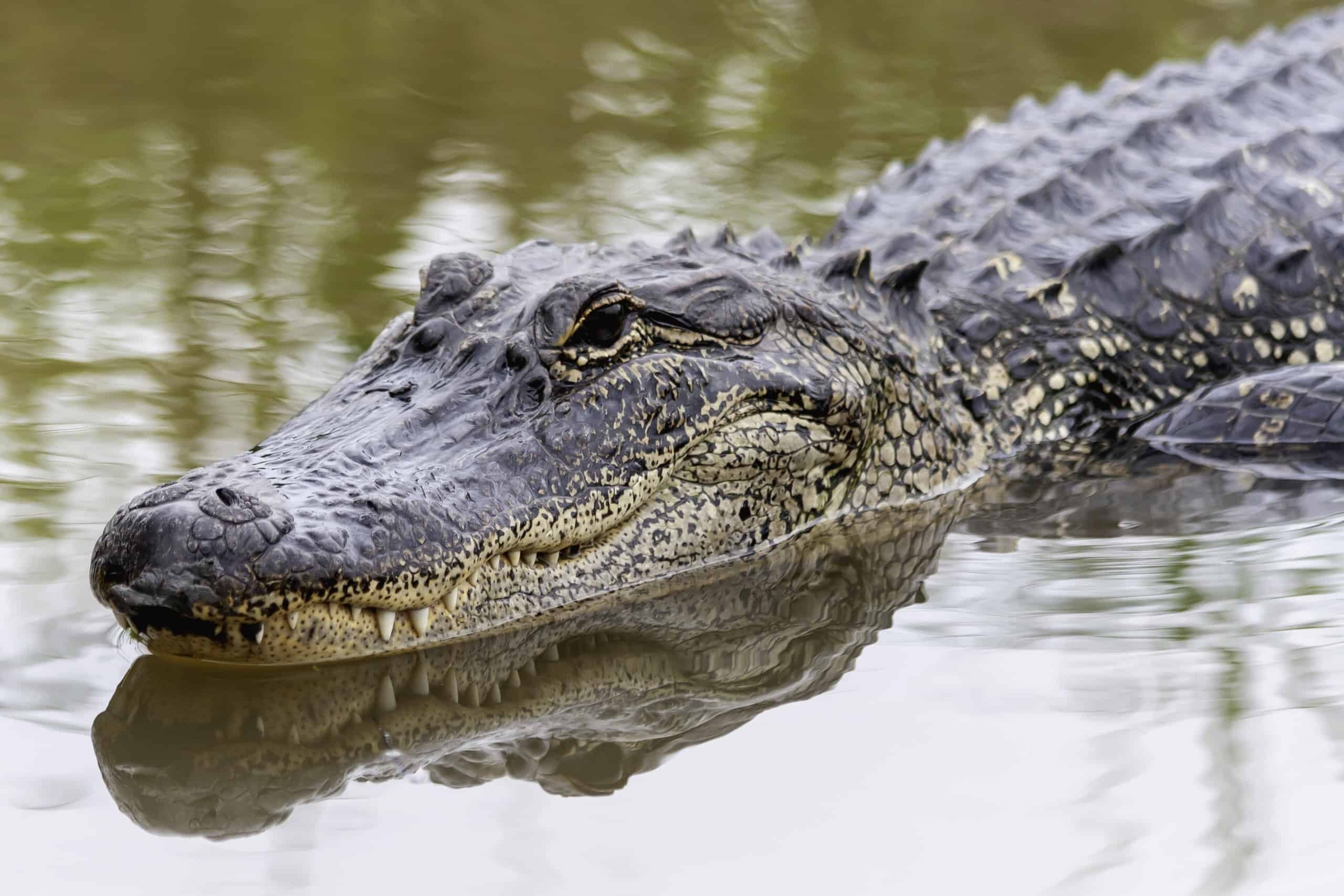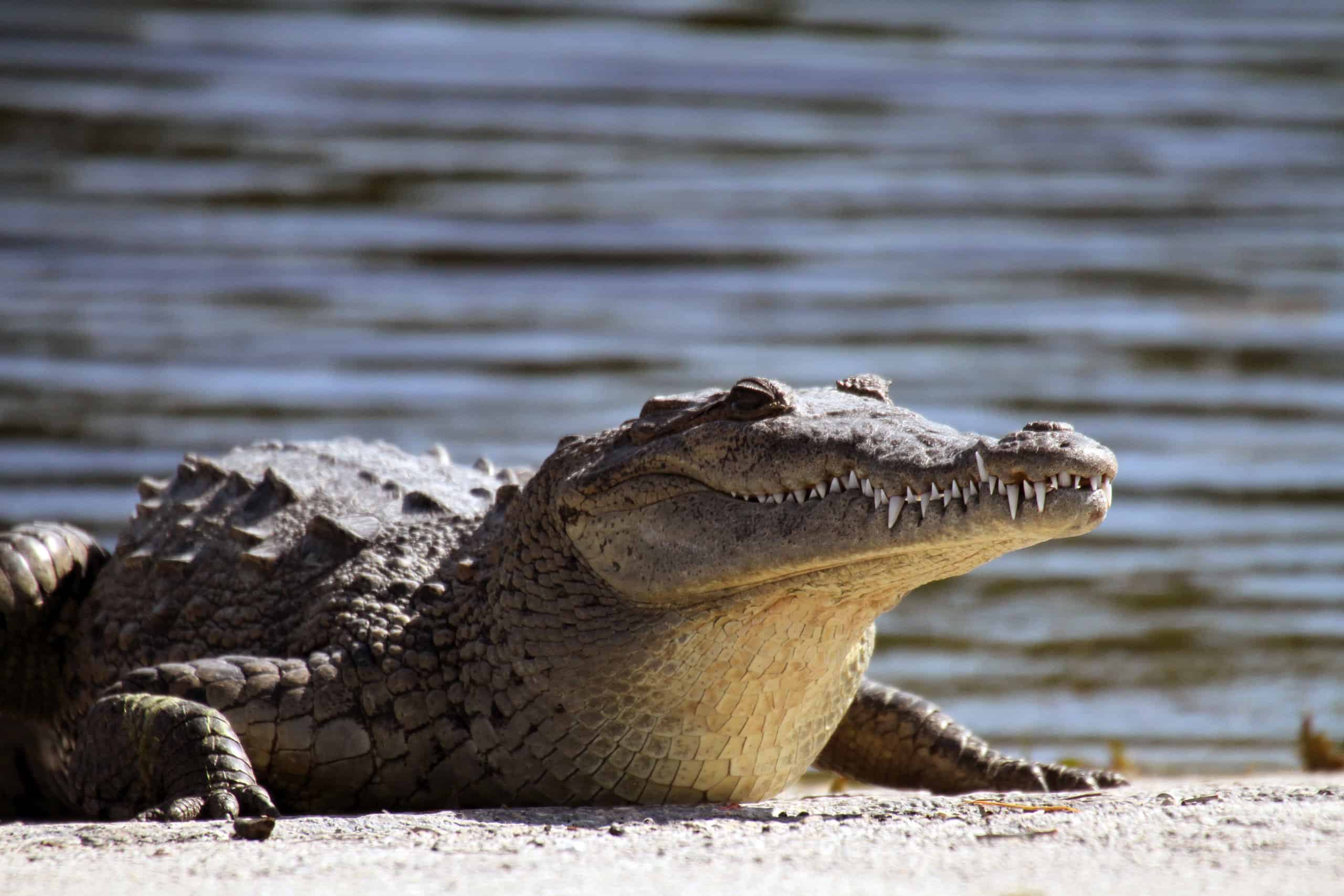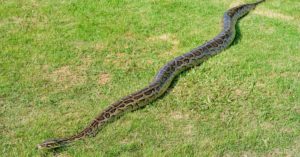Lake Istokpoga is a freshwater lake located in Highlands County, Florida. Though this body of water is the fifth-largest lake in the state, it is quite shallow and only reaches maximum depths of about 10 feet. With its shallow waters, plentiful vegetation, and warm environment, Lake Istokpoga is a perfect spot for alligators to flourish. Find out just how many gators live in this lake as well as this body of water’s fascinating history.
Species Overview: Florida’s Alligator Population
Florida and Louisiana have the largest alligator populations in the United States. In Florida, alligators are present in all 67 counties, according to the Florida Fish and Wildlife Conservation Commission (FWC). They can inhabit any freshwater body of water in the state including marshes, swamps, rivers, and lakes.
American alligators are a native species in Florida. These creatures can grow to be more than 12 feet in length and weigh as much as 1,000 pounds, according to the National Wildlife Federation. They are typically dark gray with small, bony scales called scutes.
Alligators are ectotherms, so it’s not uncommon to see them basking in the sun. While alligators can walk and even run on land, they are the most deadly in the water. American alligators have webbed feet and powerful tails that allow them to swim at speeds of up to 20 mph.
Locals in Florida have learned to coexist with their state’s massive alligator population. Though serious injuries caused by alligators are rare, they do sometimes occur. Locals and visitors in Florida are advised to only swim in designated areas during daylight hours.

Alligators are dangerous and inhabit many southern U.S. waters.
©iStock.com/Cindy Larson
Hunting and Diet
American alligators eat a number of prey such as fish, invertebrates, frogs, birds, and mammals. In some instances, they are even cannibalistic. It is not uncommon for adult alligators to feed on juveniles of their own species.
Alligators prefer to hunt at night and typically lie in wait to ambush their prey. When large prey is captured, they may drag the creature underwater to perform their deadly “death roll.” Alligators can even hunt effectively when they are entirely submerged in water, thanks to an adaptation in their throat called a glottis.
Native vs. Non-Native Crocodilian Species in Florida
The American alligator is a native and very common species in Florida. Surprisingly, American crocodiles are also native to the southern part of the state, according to the University of Florida.
You can distinguish the two species by comparing their heads and snouts. Alligators have a rounded, blunt snout, while crocodile snouts are pointed and narrow. You can also see a crocodile’s bottom teeth when its mouth is closed, unlike with alligators.
Several non-native crocodilian species also make their home in the Sunshine State. One such creature is the spectacled caiman. These creatures look similar to alligators but have triangular heads and a “spectacle” ridge on their snouts. Spectacled caimans are typically brown or olive in color.
Though it is not a common occurrence, Nile crocodiles have even been found living in south Florida. These creatures are very difficult to distinguish from American crocodiles, though they are slightly more broad.

American crocodiles are sometimes found in southern Florida.
©iStock.com/GriffinGillespie
Lake Istokpoga History
Lake Istokpoga lies within a tranquil and beautiful state park in Highlands County, FL. The 27,692-acre lake is five miles northeast of Lake Placid and is an ideal and underrated spot for fishing. Lake Istokpoga is surprisingly shallow, with depths of only four to six feet on average.
According to World Atlas, the Seminole tribe lived in the area’s wetlands since the 18th century. The lake’s name actually translates to “people have died here” in an old Seminole language.
This morbid title comes from stories of the body of water claiming the lives of many Native Americans who tried to wade across it and were caught in whirlpools or attacked by alligators.
By the 1900s, European settlers began to arrive in the area, establishing their first town, Lorida, on the lake’s north shores. Canal excavation to aid in flood control began in the mid-1900s.
Today a number of alligators still make their home in the lake. The body of water can also be extremely dangerous for boaters during windstorms. Despite this, Lake Istokpoga has somewhat turned around its reputation and become an idyllic location for fishers, boaters, kayakers, photographers, and more.
Alligators in Florida’s Lake Istokpoga
World Atlas reports that an estimated 10,000 alligators, including hatchlings, live in and around Lake Istokpoga. The lake’s massive alligator population shouldn’t come as a surprise. With its warm climate, shallow waters, and abundance of prey, Lake Istokpoga is an alligator’s paradise.
Alligator Attacks
While the lake has mostly turned around its death trap reputation, alligator attacks do occur here and there. In an interview with Field and Stream Magazine, 66-year-old Sam Crutchfield recalled his firsthand experience with an alligator attack.
Crutchfield was wading in Lake Istokpoga, flyfishing with his friend in their nearby boat. “I’d just made a cast when something slammed into me. I never saw him, just felt his teeth dig into my hip and I knew exactly what he was,” he recalled of the alligator attack.
Crutchfield managed to escape by punching the alligator with all his strength. The creature let go, and his would-be prey made it back to the boat. Thankfully he made a full recovery, but the attack gives insight into just how many gators live in Lake Istokpoga.
“From the bite marks, they think the gator was 10 to 12 feet,” Crutchfield stated. “The Fish and Game guys couldn’t trap him because when they looked, they found 100 gators in that range.”

An estimated 10,000 alligators make their home in Florida’s Lake Istokpoga.
©Brandon Noel/Shutterstock.com
View Lake Istokpoga’s Alligator Population
Alligators can be dangerous, but at Lake Istokpoga, these creatures have also become celebrities. John Scott of Jon Scott of Airboat Wildlife Adventures takes visitors on scenic tours of Lake Istokpoga. Those on his airboat may spot a number of wildlife.
However, Scott tells Visit Florida that the gators are the real stars of the show. Alligators are easiest to see on warm, sunny days when they emerge from the water to bask in the sun. Scott has even taken tourist groups from Japan to small islands on Lake Istokpoga to see the reptiles. “On a good day, the gators are everywhere,” Scott stated.
Other Wildlife Found Around Lake Istokpoga
While a number of alligators make their home in Lake Istokpoga, they’re far from the only creatures in its waters and surrounding area. The lake is a coveted fishing spot, as well as an amazing location for birdwatching. Visitors to the area may also encounter mammals such as squirrels and wild hogs.
Fish
According to Visit Florida, Lake Istokpoga is the fifth-largest bass lake in the state. Other species that make their home in the lake’s waters are speck, bream, crappie, and chain pickerel.
While the lake may not be as well known as some fishing spots in the Sunshine State, it’s a preferred fishing location for many anglers. Dave Sampson, a professional angler on the pro staff with Bass Pro Shops, owns a home on Lake Istokpoga. Sampson told Visit Florida that he fishes on the lake “200 days out of the year.”

The common bream is one of the many fish you might catch in Lake Istokpoga.
©Andrej Jakubik/Shutterstock.com
Birds
Lake Istokpoga is an incredible spot for bird-watching and photography. Species that may be found around the lake include egrets, owls, herons, turkeys, ducks, bald eagles, osprey, and buzzards, writes Visit Florida.
The lake also serves as an important home for snail kites. This spectacular bird of prey belongs to the same family as hawks and eagles. Adult males typically have dark blue-gray feathers with red eyes and a deeply hooked beak.
According to the Audobon Society, snail kites make their homes near fresh marshes and canals. They hunt by flying low over marshes and dropping to pick up snails from the surface of water or plants.
The photo featured at the top of this post is © iStock.com/Warren-Pender
Thank you for reading! Have some feedback for us? Contact the AZ Animals editorial team.







